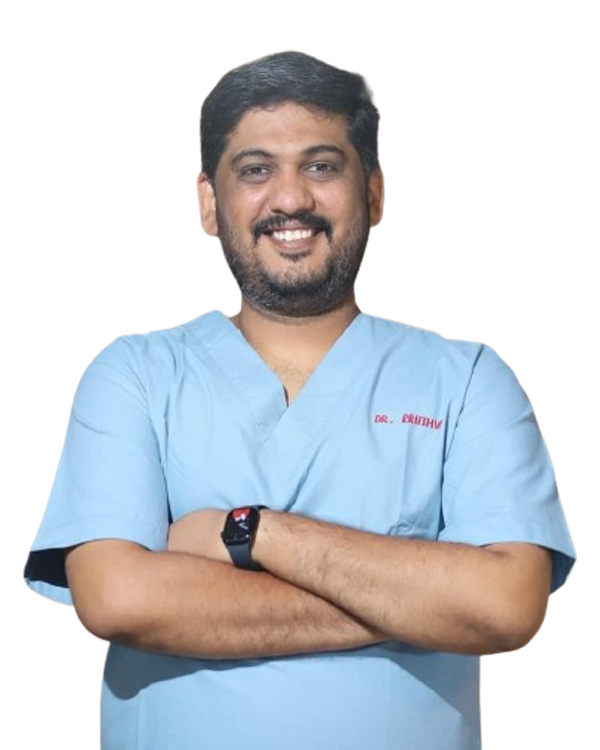Hernia and Hydrocele: Understanding Their Urological Impact
Hernia and hydrocele are common conditions affecting the groin and scrotal region, often leading to discomfort, swelling, and functional limitations. While both conditions involve abnormal fluid or tissue movement, they require different approaches to diagnosis and treatment. Under the expert care of Dr. Pruthvi Raj Honnaiah, patients receive comprehensive evaluation and specialized treatment to ensure effective management and long-term relief.
Hernia: Causes, Symptoms, and Treatment
A hernia occurs when an internal organ or tissue pushes through a weak spot in the surrounding muscle or connective tissue. The most common type affecting the groin region is an inguinal hernia, which occurs when a portion of the intestine or fatty tissue protrudes through the abdominal wall into the inguinal canal.
Symptoms of Hernia:
- A visible bulge in the groin or scrotum, which may become more pronounced with coughing, straining, or standing.
- A feeling of heaviness or pressure in the lower abdomen or groin.
- Dull or sharp pain, particularly after physical exertion.
- In severe cases, nausea, vomiting, or inability to push the bulge back in, indicating a strangulated hernia, which is a medical emergency.
Treatment for Hernia:
- Conservative Management: Small, asymptomatic hernias may be monitored with lifestyle modifications and supportive care.
- Surgical Repair:
- Open Hernia Repair: Involves repositioning the herniated tissue and reinforcing the weakened area with sutures or mesh.
- Laparoscopic Hernia Repair: A minimally invasive procedure using small incisions and a camera-assisted approach for faster recovery and reduced post-operative discomfort.
Hydrocele: Causes, Symptoms, and Treatment
A hydrocele is a fluid-filled sac surrounding the testicle, leading to swelling and a feeling of heaviness in the scrotum. It is usually painless but can cause discomfort if it becomes large.
Causes of Hydrocele:
- Congenital conditions (present at birth).
- Infections or inflammation of the testicles or epididymis.
- Injury or trauma to the scrotum.
- Secondary to other conditions such as inguinal hernia.
Symptoms of Hydrocele:
- Painless swelling in the scrotum.
- A feeling of heaviness or discomfort.
- In some cases, mild pain, especially if the hydrocele enlarges significantly.
Treatment for Hydrocele:
- Observation: Small, asymptomatic hydroceles may not require immediate treatment.
- Aspiration: Temporary relief through fluid drainage, though recurrence is common.
- Surgical Correction (Hydrocelectomy): A definitive treatment involving the removal of excess fluid and sealing of the sac to prevent recurrence.
Why Choose Dr. Pruthvi Raj for Hernia and Hydrocele Treatment?
With expertise in endourology, andrology, and laparoscopic surgery, Dr. Pruthvi Raj Honnaiah provides precise diagnosis and advanced treatment options for hernia and hydrocele. His patient-centric approach ensures minimally invasive techniques, faster recovery, and optimal outcomes for individuals dealing with these conditions.
